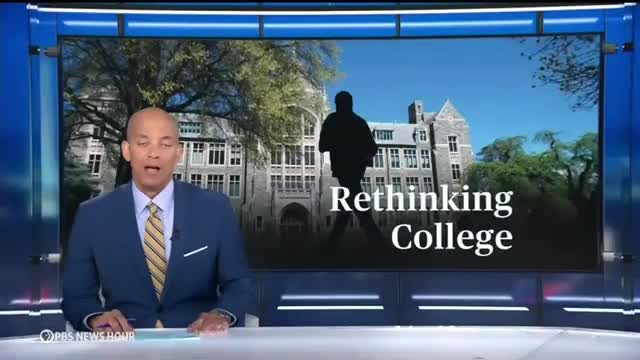Colleges face enrollment shifts after affirmative action ruling
This article was created by AI summarizing key points discussed. AI makes mistakes, so for full details and context, please refer to the video of the full meeting. Please report any errors so we can fix them. Report an error »

Colleges and universities across the United States are revealing the racial demographics of their first incoming classes since the Supreme Court's decision to overturn affirmative action, highlighting significant variations in enrollment trends. Notably, many institutions are experiencing declines in Black student enrollment, while others maintain stable or slightly increased numbers.
David Leonhardt from the New York Times discussed these trends, noting that prestigious schools like Columbia, MIT, and Amherst have seen substantial drops in the percentage of Black students. In contrast, institutions such as Georgetown, Dartmouth, and Northwestern have reported little change or even slight increases in Black enrollment. Historically Black Colleges and Universities (HBCUs) have also seen an uptick in admissions, reflecting a shift in student preferences post-ruling.
The analysis also touched on Asian American enrollment, which presents a mixed picture. While the overall share of Asian students at typical colleges has increased slightly, the rise in students opting not to disclose their race may skew these figures. This trend is believed to be influenced by the perception that race-based admissions policies were disadvantageous to Asian American applicants.
Leonhardt emphasized the importance of examining economic diversity alongside racial diversity in college admissions. He pointed out that while racial diversity has improved over the past three decades, economic diversity has lagged behind. Following the Supreme Court's ruling, some colleges are exploring economic affirmative action as a means to foster a more diverse student body, although the long-term effects of this shift remain uncertain.
Looking ahead, Leonhardt noted that the impact of the Supreme Court's decision will not be static. He referenced California's experience with similar policies over the past 30 years, where initial declines in Black enrollment at some schools eventually led to new strategies for increasing diversity. The future trajectory of enrollment at institutions like Columbia and New York remains to be seen, as they seek to address the challenges posed by the recent ruling.
David Leonhardt from the New York Times discussed these trends, noting that prestigious schools like Columbia, MIT, and Amherst have seen substantial drops in the percentage of Black students. In contrast, institutions such as Georgetown, Dartmouth, and Northwestern have reported little change or even slight increases in Black enrollment. Historically Black Colleges and Universities (HBCUs) have also seen an uptick in admissions, reflecting a shift in student preferences post-ruling.
The analysis also touched on Asian American enrollment, which presents a mixed picture. While the overall share of Asian students at typical colleges has increased slightly, the rise in students opting not to disclose their race may skew these figures. This trend is believed to be influenced by the perception that race-based admissions policies were disadvantageous to Asian American applicants.
Leonhardt emphasized the importance of examining economic diversity alongside racial diversity in college admissions. He pointed out that while racial diversity has improved over the past three decades, economic diversity has lagged behind. Following the Supreme Court's ruling, some colleges are exploring economic affirmative action as a means to foster a more diverse student body, although the long-term effects of this shift remain uncertain.
Looking ahead, Leonhardt noted that the impact of the Supreme Court's decision will not be static. He referenced California's experience with similar policies over the past 30 years, where initial declines in Black enrollment at some schools eventually led to new strategies for increasing diversity. The future trajectory of enrollment at institutions like Columbia and New York remains to be seen, as they seek to address the challenges posed by the recent ruling.
View full meeting
This article is based on a recent meeting—watch the full video and explore the complete transcript for deeper insights into the discussion.
View full meeting